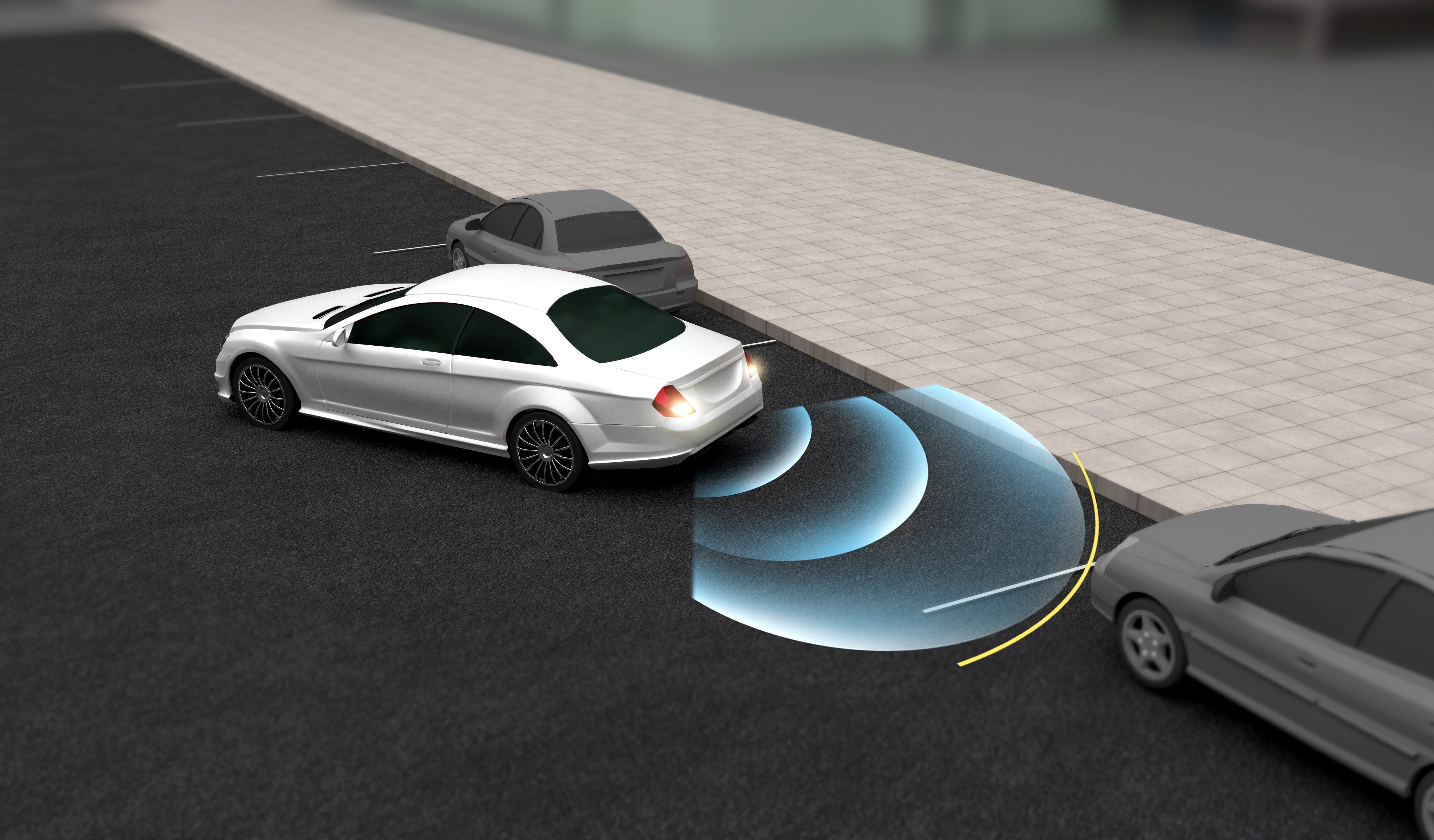Intelligent, autonomous vehicles must be able to sense their surroundings in order to make timely decisions that will allow them to move safely. For short range applications including parking and blind spot detection, ultrasonics are a good choice due to their simplicity and robustness. Recently, their versatility is opening up a number of new use cases. This blog will briefly look at how ultrasonic sensors have evolved and consider current and future applications, indicating where they may be used in coming years.
A Brief History of Automotive Ultrasonic Sensors
Addressing a need to detect objects and find flaws in solid materials, ultrasonic technology can trace its roots back to a first patent in the 1930’s. The primary usage has always been in detection, such as for intruder alarms.
Once vehicles gained more electronic content, automakers sought to solve the problem of damage caused while maneuvering. Incorporating ultrasonic sensors into the bumpers, coupled to an in-cabin buzzer to alert the driver to hazards was the earliest generation solution. Later the buzzer was augmented by a screen showing the location of the obstruction.
The ultrasonic transducers have evolved to enhance performance – primarily to improve signal-to-noise ratio (SNR) and increase detection distance. The enhanced performance made the sensing technology suitable for more safety critical automotive applications – such as detecting other vehicles in the blind spot or detecting road conditions to adjust braking if the road surface is wet.
Recently, ultrasonic sensors have found applications inside the cabin. In response to expected legislation, they are used to detect passengers to trigger seatbelt warnings and to ensure that airbags are deployed according to the size and weight of any passenger. They can also be used to monitor the driver for alertness, detecting breathing and heartbeat.
Given the complexity of modern dashboards, gesture control is likely to become more popular. Here, ultrasonic sensors track the movement of the driver’s hand and use this as an input to operate the vehicle in the same way as pressing a switch or turning a knob.
onsemi’s Ultrasonic Sensor Solutions
onsemi has been a market leader in supplying custom ultrasonic sensor interfaces for park assist and autonomous driving applications to major automotive OEMs since 2007. When combined with a piezoelectric ultrasonic transducer and some additional circuitry, onsemi’s NCV75215 ultrasonic sensor provides time-of-flight (ToF) based distance measurement. This system is advantageous for identifying obstacles while parking or performing low-speed maneuvers in the shorter range. The very sensitive device can detect a standard 75 mm pole within the range 0.25 m to 4.5 m, provided the circuitry and transducer allow this.
Designers wanting to evaluate the full performance of the chip in parking (or other similar) applications can request for the NCV75215R1GEVK ultrasonic parking assist kit from onsemi. Based upon an advanced graphical user interface (GUI), the EVK is easy to operate and provides for full evaluation and detailed debugging of prototypes. Within the evaluation kit (EVK) is an EEPROM to retain valuable user data as well as configuration settings. The chip can be fully accessed and key parameters including receive (Rx) gain and transmit (Tx) current are adjustable via the GUI.
Future Trends and Innovations
As ultrasonic technology advances and consumer expectations grow (especially in the automotive space), innovative applications are being created. Many expect that the rate of change within this area will accelerate.
One example is 4D sensing where a microelectromechanical system (MEMS) microphone is placed alongside the ultrasonic sensor. Capable of picking up the ultrasonic signal, the MEMS microphone detect other sounds – including the noise of an approaching vehicle. One important use case would be to identify the siren of an emergency vehicle, warning of the need for appropriate action.
One of the challenges is the accumulated dust and moisture that leads to reduced performance with ultrasonic sensors and similarly with forward-facing cameras. Recent innovations include incorporating a piezoelectric device in the sensor assembly allowing the sensor to be vibrated at high frequencies. This has been demonstrated to remove raindrops, general dirt and ice accumulation – ensuring that the safety-critical sensor is operating correctly.
As environmental concerns are driving the industry towards electric propulsion, it is essential to know the state of charge and health of the traction battery. Most commonly, this is done through the measurement of voltage and current, although there are limitations to this approach. Ultrasonic transducers mounted inside the battery have been shown to provide a highly accurate indication of the state of charge (SoC) and state of health (SoH) of battery.
Conclusion
onsemi has been a leader in ultrasonic technology for the automotive market for decades, offering several solutions alongside design tools such as evaluation kits Even though it is long-established, ultrasonic distance measurement is enjoying a renaissance as vehicles become ever more reliant on detecting objects in their vicinity. Recently, this has extended to in-vehicle applications, as well as industrial applications such as autonomous robots and automated guide vehicles, to further enhance safety. With the rapid innovation in the automotive sector and the continued push towards higher level of ADAS and automated driving, ultrasonic technology is expected to provide higher performance and expand its use cases in many more industrial applications. Contact us to learn more about how to implement ultrasonic sensors in your next design.
Additional Resources:

